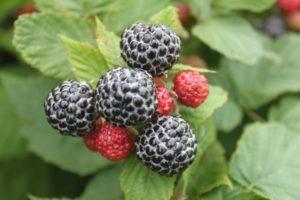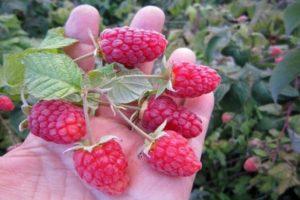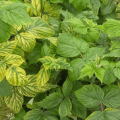Description of raspberry variety Gigantic (Pride of Russia), planting and care
The high demand for Giant raspberries, according to the description, is due to the numerous advantages of the variety. Due to the stable yield, size and juiciness of beautiful berries, this variety can increasingly be seen in garden plots. It is recognized by both gardeners and consumers, whose positive reviews justify its second name - Pride of Russia.
Description of raspberry Giant
Raspberry Giant forms a branched root system and strong compressed bushes, reaching up to 2 m in height. Erect, thick shoots do not have thorns, which makes it easier to care for the crop. The large-sized culture is decorated with dark green leaves with a felt edge at the top. Flowering pleases the eye with white inflorescences in the form of a brush.
Stems
During the growing season, the raspberry variety ispolin forms up to 10 strong, thick stems and up to 7 root suckers. Up to 30 fruits appear on each, ripening in 5-6 stages.
Description of the appearance and taste of berries
The elongated-conical fruits are ruby-colored with velvety texture and beautiful shine. The pulp is dense, juicy, retains its shape for a long time. The berries have a sweet and sour taste and have a pleasant forest aroma.
Fruit
The variety is prized for its large fruits. The weight of one berry is within 10-15 g, and with proper care - 20-25 g. These indicators make the Giant raspberry the leader in size among crop varieties. The drupes are large, tightly pressed against each other, the bones are small, not felt when used fresh. The fruits are easily removed from the bush, they do not fall off on their own even in the ripeness phase.

Characteristics of the variety
Raspberry Giant is a remontant mid-season variety. Harvesting occurs in early July and lasts until the end of the growing season. This type of culture belongs to the early maturing self-fertile varieties.
Benefits:
- high yield rates - 5-6 kg of berries per bush;
- excellent taste properties;
- intensive growth of vegetative mass;
- lack of shattering of fruits when fully ripe;
- good frost resistance;
- immunity to major common diseases;
- easy transportability.
Disadvantages:
- the appearance of double berries, characteristic of large-fruited forms;
- low sugar content of berries in cold rainy weather;
- exactingness to the availability of nutrients in the soil.

Due to the advantages, the Giant raspberry variety is widely used by gardeners not only for personal, but also for commercial purposes.
Landing of the Pride of Russia
Raspberries of the Giant variety require attention from the gardener, competent planting and providing comfortable conditions for growth. In order for the raspberry plant to fully develop, and to please the harvest with quality, you need to carry out a number of care measures. And from July, enjoy the sweet taste and bright aroma of healthy berries.
Landing time and place
Raspberries of the Giant variety are recommended to be planted in the spring, until the buds open. Then the seedlings adapt to the climate, and their root system will actively begin to grow. It can also be planted in autumn, in late September or early October, 2 weeks before the first frost.
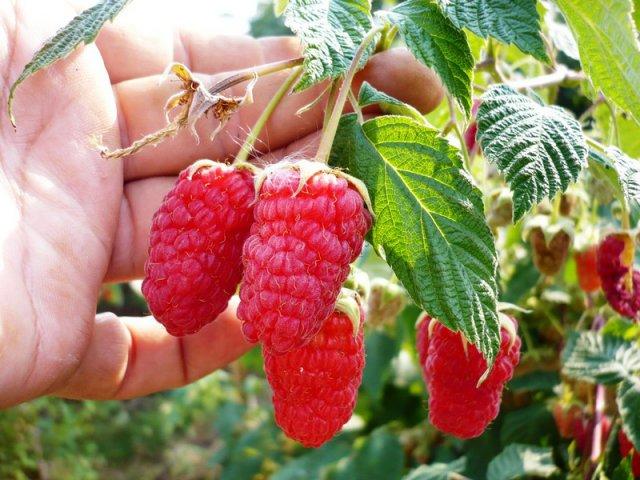
The plant is sensitive to light, therefore it is better to select a place illuminated by the sun and protected from cold winds under the raspberry tree. Raspberry varieties Giant prefers neutral, fertile, light loamy soils.
Preparation of planting material
High-quality planting material is considered a determining factor when laying a raspberry tree. Therefore, raspberry seedlings of the Giant variety should be 30 cm high, have shoots 5 cm thick at the base, and also have a strong and strong root system without obvious defects. Before planting, it is worth treating the roots with growth stimulants.

Landing technology
Planting raspberries of the Giant variety requires the following actions:
- Clear the area from weeds and dig up. Apply fertilizers containing 6 kg of rotted manure, 25 g of potassium and 60 g of superphosphate per 1 sq. meter.
- Make pits 40 x 40 x 50 cm in size, maintaining a distance between rows of 1.5-2 m, and 50 cm between planting units.
- Equip the bottom of the holes with a fertile substrate.
- Lower the seedlings, spreading the roots, and sprinkle with soil.
- Pour 4-5 liters of water under each bush. When the water is absorbed, fill the hole using dry soil. The root collar should be level with the ground.
- After planting, mulch with peat, straw with a layer of at least 7-10 cm.
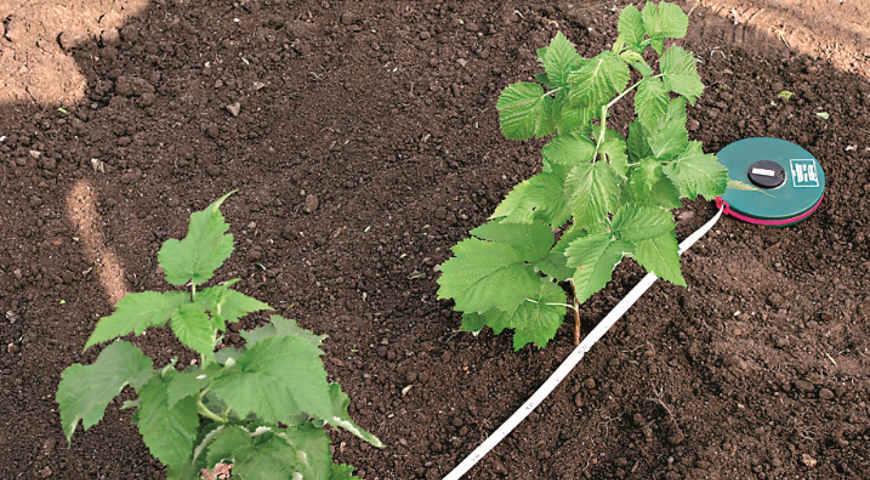
The nuances of care
The yield, the rate of ripening of berries and their taste depend on timely and proper care, therefore the necessary procedures must be performed annually without fail.
Raspberry watering rules
Raspberry care The pride of Russia includes high-quality watering, which will increase yields and increase the mass of berries. It must be carried out before flowering, during the formation of the first fruit ovaries and at the time of their ripening, as well as after harvesting and before cold weather. Regular watering is also needed in dry weather.The main thing is not to flood the bushes so that the roots of the plant do not rot..

What and when to feed
The culture is responsive to good food. The plant is fed with organic matter and minerals. Top dressing is applied after planting, fertilizing with slurry diluted with water.
Also, the soil enriched in early spring with nitrogen, slightly rotted manure will have a positive effect on the rate of emergence of new shoots.
Throughout the season, minerals such as superphosphate, potassium sulfate should be used as fertilizer. It is important to make the intervals between feedings in 2-3 weeks. When autumn comes, pour ash between the rows of raspberries and saturate the soil with nutrients such as phosphorus and potassium.

Loosening, weeding and mulching
For normal growth, raspberries of the Giant variety need weeding, as well as loosening, which provides air access to the roots. In loose soil, moisture remains longer, and comfortable conditions are created for the development of beneficial bacteria.
After each fertilization, the soil is mulched with a mixture of peat and rotted manure.This will help to better assimilate fertilizers and protect the raspberry from the growth of weeds, as well as make the soil light, breathable, create an optimal temperature regime for the soil, and prevent the roots from drying out.
Tying to trellises and trimming
The Giant raspberry variety is recommended to be cultivated on a trellis. With this method, the branches do not lean towards the ground, but are arranged vertically and are illuminated by the rays of the sun along their entire length. This allows for a generous crop in a limited area and minimizes all known crop diseases.
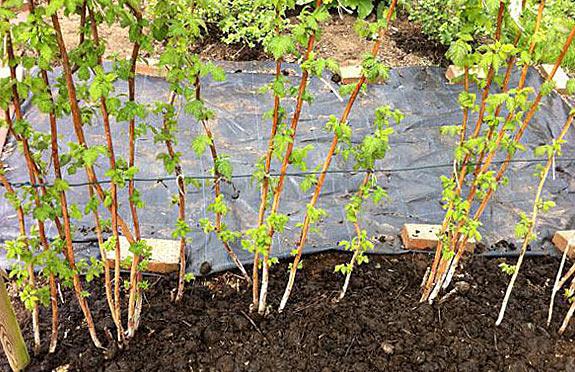
Raspberry Giant is prone to overgrowth, so pruning is necessary. This procedure must be carried out at the beginning of spring, removing deformed shoots, and also after budding, by shortening the stems by 15 cm. Correct pruning is also needed in the fall before the onset of cold weather. It consists in removing weak shoots and last year's stems.
Preparing the Giant for winter
Raspberry bushes of the Giant variety need shelter, if only the temperature indicators drop to 30 degrees below zero. To do this, in the fall, bend the stems to the ground and wrap them using agrofibre, and in winter, throw snow into the raspberry tree.
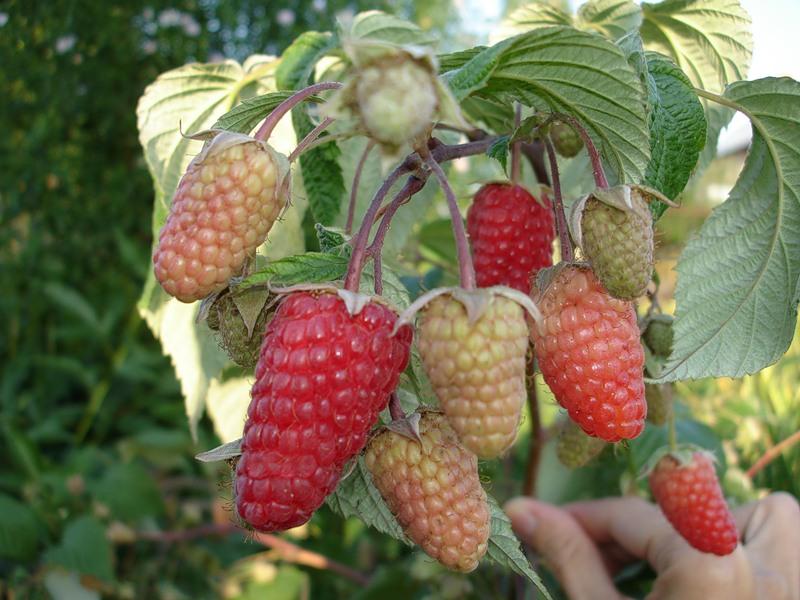
Methods of dealing with ailments and insects
According to the characteristics, the Giant raspberry variety is resistant to various diseases and pest attacks. But with poor care, resistance to ailments can decrease. Therefore, so that the bushes do not become infected with diseases (root cancer, septoria, rust) and do not become the center of a cluster of insects (raspberry moth, gall midge, spider mite), you need to process the plants using Bordeaux mixture or other special means and folk methods.
How to breed a variety
At home, reproduction of raspberries is a procedure that does not require financial costs, if a high-quality sapling of the Giant variety was originally purchased.
There are three methods of breeding, the effectiveness of which has been tested in practice:
- root suckers;
- cuttings;
- division of the bush.
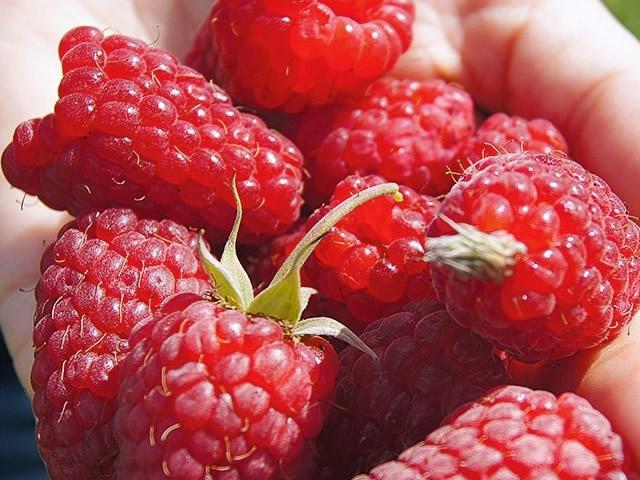
The choice of any of the methods will significantly increase the raspberry tree.
Cleaning and storing raspberries
Harvesting of the Giant raspberry variety is carried out in dry weather, early in the morning, after the dew has dried. Ripe, but not overripe fruits are removed together with the stalk and placed in a bowl with a volume of 2-4 kg. Large containers are not used, since juicy berries are crumpled under the weight of their weight.
It is recommended to process the crop immediately. The collected berries can be stored for no more than a day.
Growing and caring for a variety of large-fruited raspberries The pride of Russia is simple and within the power of all gardeners who want to grow it. Performing all the techniques of agricultural technology, you can find an approach to this berry culture. And she, feeling cared for, will begin to actively grow, develop, giving sweet, healthy fruits.
